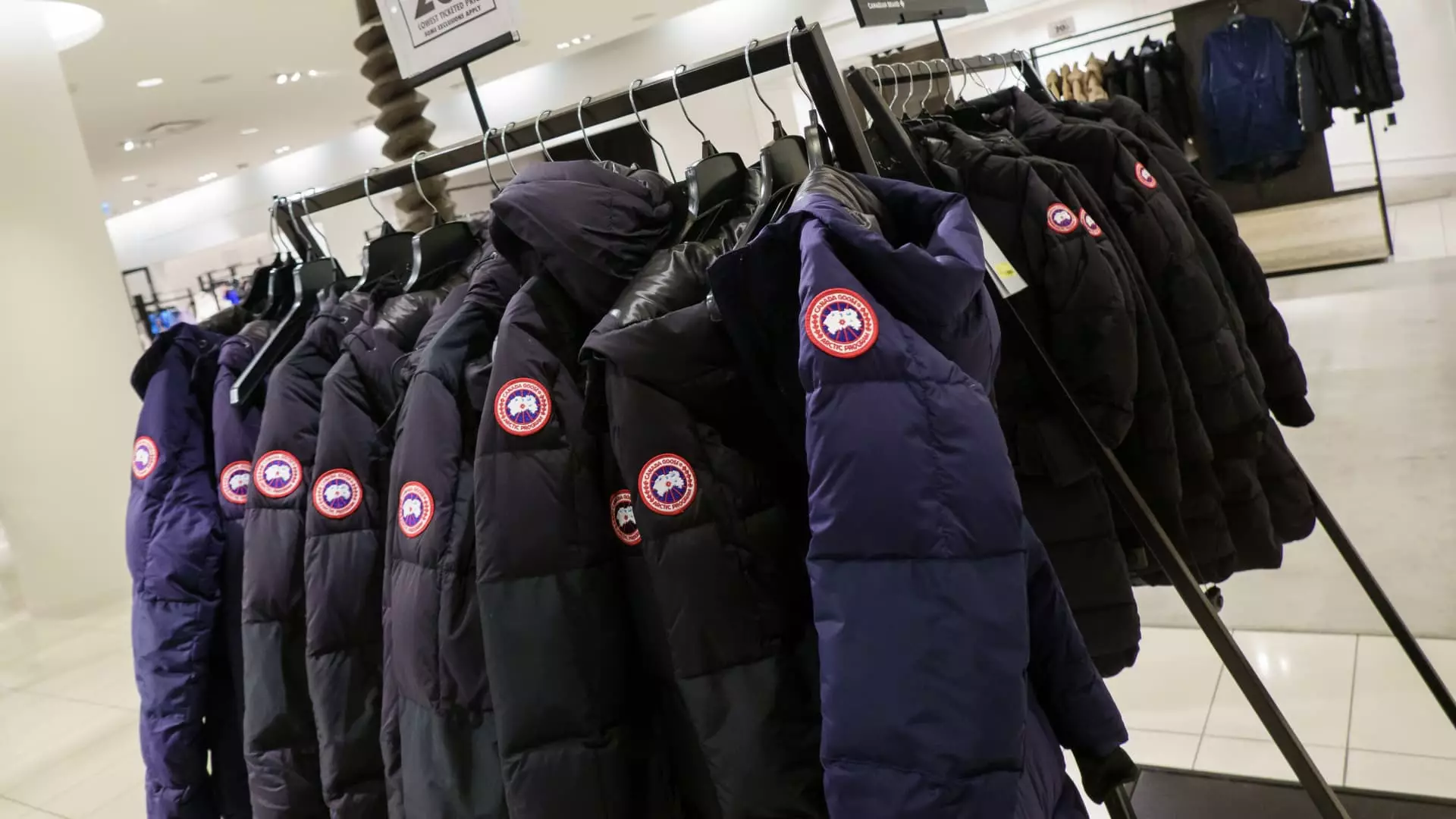In a world inundated with economic uncertainty, the sudden nearly 20% surge in Canada Goose’s share price is akin to finding a rare flower blooming in the arid deserts of fiscal hardship. The luxury outerwear brand reported fiscal fourth-quarter earnings that surpassed analysts’ expectations, a testament to its resilient business model and strong brand identity. Specifically, the company recorded earnings of 33 Canadian cents per share against the forecasted 23 Canadian cents, alongside revenues of CA$384.6 million compared to the projected CA$356.4 million. On the surface, such figures would typically suggest an optimistic outlook. Yet, the shadow of “macroeconomic uncertainty” looms large, as the company refrains from offering fiscal predictions for 2026. This dual narrative of triumph and caution illustrates the complexities facing modern retail.
Brand Strength vs. Market Instability
Canada Goose’s management expressed unwavering confidence in the strength of their brand and financial positioning, despite the chaotic global landscape that has left many businesses reeling. COO Beth Clymer highlighted that 75% of their products are manufactured in Canada, ensuring compliance with trade agreements and buffering them from tariffs instituted during tumultuous trade negotiations. CEO Dani Reiss’s assurance that the majority of products remain unaffected by tariffs speaks to the company’s strategic positioning; however, it isn’t a comprehensive shield against broader economic fluctuations. This resilient mentality can only carry Canada Goose so far when the winds of consumer spending shift violently due to unpredictable global trade dynamics.
The luxury market has shown undeniable cracks, as highlighted by slower sales among industry heavyweights like LVMH and Kering. This phenomenon can’t be ignored as Canada Goose attempts to carve its niche. The push towards diversification with non-winter apparel illustrates a proactive approach, yet it remains to be seen if this strategy will be enough to sustain the brand in a competitive landscape. The introduction of AI-driven virtual try-on tools for their eyewear line is an innovative step towards modernization, but innovation must translate into sales for the company to maintain momentum amidst broader market concerns.
The Double-Edged Sword of Consumer Spending
The dynamics of consumer spending have been anything but favorable for high-end brands as disposable incomes face pressure from inflation and shifting economic priorities. The narrative of a luxury retailer thriving amidst tightening belts raises eyebrows. While Canada Goose may report growth, it must grapple with the reality that these figures could merely be a reflection of a niche market segment that remains insulated from broader economic challenges.
The historical context provided by Reiss—mentioning past hurdles since 2008 and during the COVID-19 pandemic—paints a picture of resilience. However, drawing parallels between previous crises and the current economic climate can border on naïveté. Each economic downturn has unique causes and repercussions, making it essential for Canada Goose to adapt, rather than rely on past successes. There lies a risk that their traditional business model might find itself outdated if they do not keep pace with consumer desires and the fast-evolving retail environment.
Trusting in the Future Without a Roadmap
The absence of a fiscal outlook for 2026 should raise alarms for investors and stakeholders alike. While management expresses confidence in the brand, the lack of guidance suggests a hesitancy to project certainty in an unpredictable marketplace. Companies thrive on clarity and forward momentum; a blind faith in brand strength can only go so far in the face of volatile consumer trends and external economic pressures.
The stock market’s reaction—a short-lived surge followed by underlying apprehensions—mirrors the contrariness of hope amidst uncertainty. Strong earnings results highlight potential resilience, but the ever-present risks of economic shifts test even the most established brands.
Ultimately, Canada Goose finds itself at a crossroads of innovation and traditionalism, adapting to a landscape that operates outside the bounds of their control. The question remains: will their efforts to diversify and modernize be enough to solidify their standing in a luxury market that shows signs of fragility? The upcoming quarters will reveal whether this once-celebrated Canadian brand can navigate the complexities of a shifting economic terrain while preserving its image as a market leader.

Leave a Reply